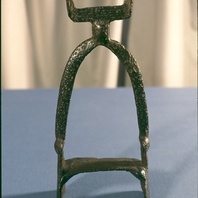
Viking Objects
Stirrup (LCNCC : 1906.9663)
A large iron stirrup of Viking type with a long slender looped form, rectangular terminal, and a flat footrest. It was found in the River Witham near Lincoln. Stirrups like this were an innovation that Scandinavian settlers introduced to Anglo-Saxon England in the eleventh century.
Read More

Viking Names
Butti
Butti was a rare name in Scandinavia but is attested as an element in Norwegian place-names. It is also believed to be the first element of the place-name Budby, Nottinghamshire.
Read More

Viking Names
Bild
The Old Norse male personal name Bíldr is originally a byname meaning ‘blade’. It is the personal name of a fictional character in West Scandinavia and is frequently used as a byname there. A Bildus is mentioned in Saxo and the name appears as a byname in Denmark and may be found in some Danish place-names. Bildr is the first element of the place-name of Bilsthorpe, Nottinghamshire.
Read More
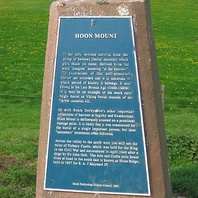
Viking Names
Hoon
Hoon, in the Appletree Hundred of Derbyshire, is a simplex place-name from haugum, the dative plural form of Old Norse haugr ‘a natural height, a hill, a heap, an artificial mound, a burial mound’, which gives the sense ‘at the barrows’. One of these barrows is now called Hoon Mount.
Read More
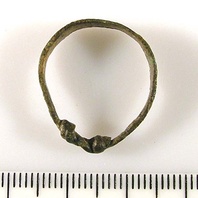
Viking Objects
Copper-Alloy Finger-Ring (LIN-E42F77)
The ring is formed by a flat band tapering to ends which have been knotted together. The outer face of the band is decorated with a row of punched ring and dot motifs.
Read More
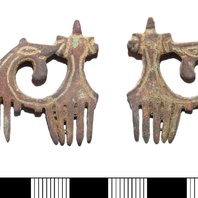
Viking Objects
Comb Pendant (LIN-DD07D2)
The pendant is decorated with two inturned zoomorphic heads executed in Ringerike-style ornament. These comb-shaped pendants are closely paralleled in the area around the Baltic Sea such as northwest Russia, Finland, Latvia and Lithuania, with rare examples from Estonia and Sweden. Pendants were a popular dress accessory in Norway and Sweden and sometimes were worn with beads between a pair of oval brooches. In England, pendants did not have the same popularity and there do not seem to be any contemporary Anglo-Saxon pendants.
Read More
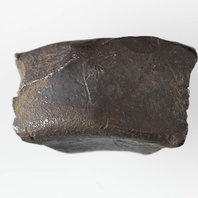
Viking Objects
Arm Ring Hacksilver (CM_1826_2001)
This piece of hacksilver was cut from a square section of a Scandinavian arm ring probably to pay for goods. The Vikings arriving in England had a bullion economy where they paid for goods with silver that was weighed to an amount agreed between the buyer and the seller. Hacksilver and silver ingots are the most common evidence for their bullion economy. It took some time for the Scandinavian settlers to adopt a monetary economy like that of the Anglo-Saxons, and both systems were used simultaneously for a while before they fully adopted the new system. They were familiar with monetary economies but they treated coins as just another form of silver before adoption of a monetary economy.
Read More
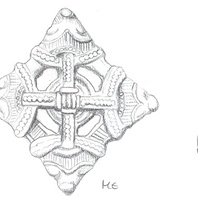
Viking Objects
Lozenge Brooch (NLM194)
This openwork Borre-style square brooch with animal heads on each corner was found in Elsham, Lincolnshire, in 1997. This type of brooch was an accessory for women wearing Scandinavian dress. For more information on Scandinavian jewellery in England check out our blog: Brooches, Pendants and Pins: Scandinavian Dress Accessories in England.
Read More
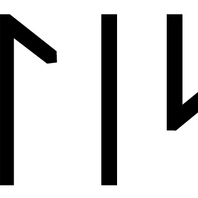
Viking Names
Blesi
The male name Blesi is found in two Swedish runic inscriptions and is also recorded as the name of one of the original settlers of Iceland. It was originally a by-name, meaning ‘blaze, white spot on a horse’s forehead’. Blesi is also the first element in the place-name Bleasby, Nottinghamshire.
Read More
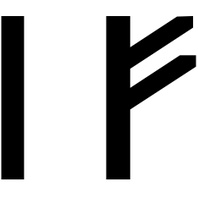
Viking Names
Ref
Refr is a fairly common male name in the Viking world. It is found in two Swedish runic inscriptions and may originally have been a nickname, as it means ‘fox’. It forms the first element of Revesby, Lincolnshire.
Read More
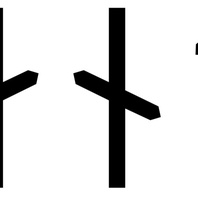
Viking Names
Sandi
Sandi is either a short form for names in Sand- or an original byname from Old Norse sandr ‘sand’. A single instance of Sandi is recorded as a byname in West Scandinavia. It is also recorded in Sweden. Sandi is also the first element in the place-name Saundby, Nottinghamshire.
